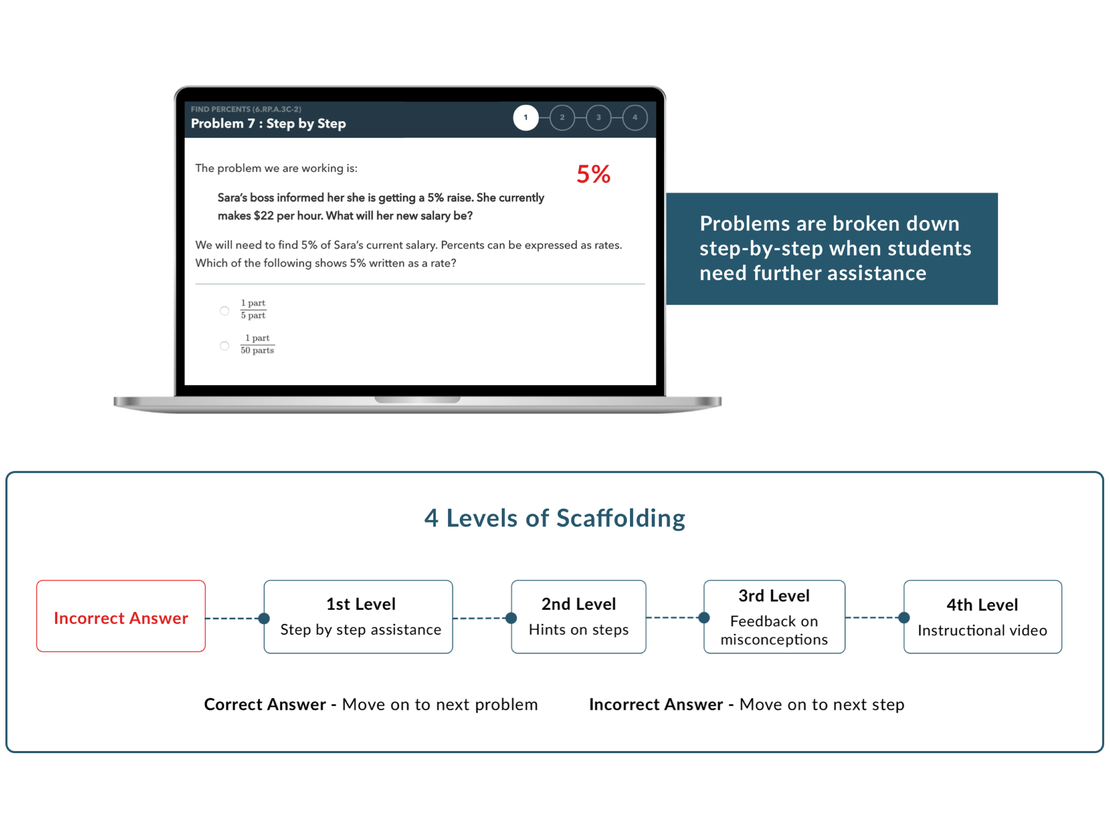When I was in the classroom (pre-1997), we didn’t have the technology that’s available today. Instead, I had wall-to-wall chalkboards at the front and back of my room. I knew it was important for students to own their mistakes, so one of my methods for checking homework was to display all of the correct answers on the overhead projector and have students review their own work. If they got an answer wrong, they could voluntarily put their solution on the chalkboard for help.
With this method, I saw a few things happen:
The process of identifying and owning mistakes helps students recognize that they’re competent problem solvers. This is called productive struggle, and it’s the foundation of Achieve3000 Math, our digital math solution for K-12 students. Because the platform breaks missed problems down into component parts, students can quickly identify any misconceptions and get back to correct solutions. And the best part is that feedback is immediate. Students don’t have to wait for the next class to find their errors.
When students go through the steps of a problem in Achieve3000 Math, they’re provided with personalized, scaffolded instruction and feedback based on their answers. Here are some ways the platform supports students through productive struggle.
Correct Answer: If a student answers a problem correctly, they move on to the next problem, which is tailored to their proficiency level based on benchmark assessments.
Incorrect Answer: If a student answers incorrectly, the platform walks them through four levels of scaffolds to help them reach the right answer.

Many people ask us why we don’t simply show the videos first so that students can quickly get the problem right and move on. The answer is practice. As with most things, kids learn math by doing, and by learning from their mistakes. By providing scaffolds and positive practice using the correct methods, students can complete the exploration they need to really learn the material rather than just get a good grade.
The more students practice their math skills while getting correct answers, the better mathematicians they will become.